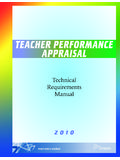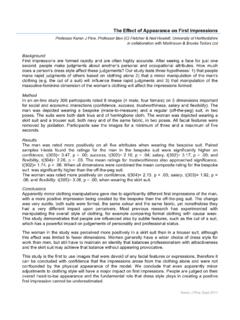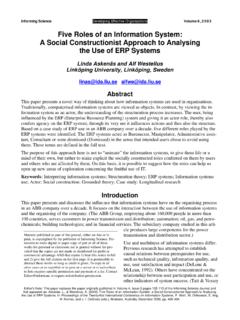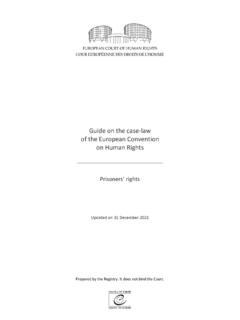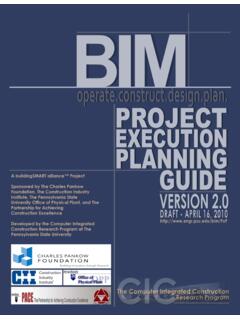Transcription of Five Basic Types of the English Verb - ed
1 1 five Basic Types of the English Verb Wenyuan Gu West Career & Technical Academy Las Vegas, Nevada July 20, 2018 How to use the English verb correctly and what elements should be used after a verb are very important for English language learners when they study English . In this article the writer used those English language learners to refer to as those whose native languages are not English . It is the verb that forms the frame of an English sentence. Just like the engine in a car, the verb is the most important part of English grammar. Generally speaking, there may be not many problems for native English language learners when they speak or write English , but there are always big problems for those English language learners who are influenced by the formation of construction from their native languages. Hence, they may speak or write broken English . An intransitive verb cannot be used as a transitive verb.
2 Verbs may be divided into intransitive verbs (vi.), linking verbs, and transitive verbs (vt.) so far as their constructions with other sentence elements are concerned. Transitive verbs are further divided into mono-transitive (having one object), di-transitive (having two objects) and complex-transitive (having an object and a complement). Those English learners often find it difficult how to use the English verb correctly. There are five Basic Types of construction of English verbs (as indicated above): intransitive verbs, linking verbs, mono-transitive (having one object), di-transitive (having two objects) and complex-transitive (having an object and a complement). An English verb may belong to one or more of the five Types . But where it belongs is entirely a matter of usage, not of will. This is what is especially important to those English learners. In studying a verb, great attention should be paid to how to learn to use it in its proper type or Types , construction or constructions - a point too important not to be emphasized.
3 But many books on grammar do not help very much in this regard, because the Types have been described briefly, examples shown here and there, and a little reference has been made to usage. Having taught English as a second language for seventeen (17) years, the writer tried to summarize and illustrate the five Basic Types 2 of the English verb, on the basis of his teaching experience and extensive review of various literatures from different English grammar books, reference books, and the consultation of English dictionaries, in order for those English learners to further understand how to use the verb correctly. The present illustration of various sentences is intended to present the usage of the five Basic Types of the English verb in a way that is to be logical, instructive, and comprehensible. It will be introduced in the order given above. I. The Intransitive Type The intransitive verb (vi.) is one which makes a complete sense by itself and does not require any word or words to be added to it for this purpose.
4 That is, the intransitive verb does not take an object. The sentence structure should be subject-verb (SV) form, as in 1. Rivers flow. (Rivers is the subject and flow is an intransitive verb. It is SV.) 2. Winds blow. (Winds is the subject and blow is an intransitive verb. It is SV. ) 3. Birds fly. (Birds is the subject and fly is an intransitive verb. It is SV. ) 4. All animals sleep. (All animals is the subject and sleep is an intransitive verb. It is SV.) 5. Men walk. (Men is the subject and walk is an intransitive verb. It is SV.) 6. Fish swim. (Fish, a collective noun, is the subject and swim is an intransitive verb. It is SV.) 7. Storms arise. (Storms is the subject and arise is an intransitive verb. It is SV. ) 8. All animals die. (All animals is the subject and die is an intransitive verb. It is SV.) 9. The sun rises. (The sun is the subject and rises is an intransitive verb. It is SV.) 10. The ship sank. (The ship is the subject and sank is an intransitive verb.)
5 It is SV.) All the verbs given in the sentences above can stand by themselves, that is, no other elements are followed, so they are the intransitive type. An intransitive verb (vi.) is not followed by an object as seen above, but an intransitive verb can be followed, most of the time, by a prepositional phrase [14, 15] or an adverbial [11, 12, 13, 14]. It falls into the subject-verb-adverbial (SVA) pattern besides SV, as in 11. He walks every morning. (He is the subject, walks is the intransitive verb, and every morning is the adverbial of time. It is SVA.) 3 12. The old man sleeps downstairs every day. (The old man is the subject, sleeps is the intransitive verb, downstairs is the adverbial of place, and every day is the adverbial of time. It is SVAA.) 13. He works hard. (He is the subject, works is an intransitive verb, and hard is an adverb, which is used as the adverbial of manner. It is SVA.) 14. The Titanic sank after hitting an iceberg.
6 (The Titanic is the subject, sank is the intransitive verb, and after hitting an iceberg is the prepositional phrase, which is used as the adverbial of time. It is SVA.) 15. These planes can fly at incredibly high speeds. (These planes is the subject, fly is a intransitive verb, and at incredibly high speeds is the prepositional phrase, which is used as the adverbial of manner. It is SVA.) 16. These shirts wash well. (SVA) 17. The meat cuts easily. (SVA) 18. Oranges are selling cheaply today. (SVAA) 19. The door doesn t open in wet weather. (SVA) Note that many verbs can be used in a passive sense in such sentences [from 16 to 19] as shown above, for example. Palmer (1978) called these sentences pseudo-passive . Of course, there are hundreds of intransitive verbs, in fact, too numerous to enumerate. And as has been pointed out, a verb may fall into one or more Types . For instance, the verb blow, fly, or even die may be used as a mono-transitive in subject-verb-object (SVO) pattern or subject-verb-object-adverbial pattern (SVOA).
7 They are transitive verbs (vt.), as in 20. He blew the candle out. (SVOA) 21. We fly a kite once a week. (SVOA) 22. Some people die an early death. (SVO) In fact, many English verbs have a transitive and an intransitive use. Each construction has to be learned by heart. Death in Sentence 22 above is called cognate object. (Also see Cognate Objects in SVO construction below in A. The Mono-transitive Type.) II. The Linking Verb Type A linking verb is a verb which is followed by a predicative to introduce what the subject is or is like. It falls into the subject +verb + complement (SVC) sentence structure. Some grammarians 4 called it subject complement. The verb be is a typical linking verb which is usually followed by a noun [1, 23] or noun phrases [2, 9], pronouns [4, 5], a gerund or gerundial phrase [3], an infinitive or infinitive phrase [10, 11], participles (present participle or past participle used as adjectives) [6, 7.]
8 8], adjectives [20, 22], a numeral [12,13], an adverb (usually denoting place ) [15, 16, 17], prepositional phrases [14, 25, 26, 27, 28, 29, 30, 31, 32, etc.], and noun clauses [18, 19]. Its SVC structure may resemble a mono-transitive (SVO) in form, when the predicative is a noun [1, 47]. The following are some of the examples of SVC: 1. He is a teacher. (Is is a linking verb followed by a noun, a teacher. It is SVC.) 2. It was a clever excuse but it didn t really ring true. (A clever excuse is a noun phrase used as complement. It is SVC.) 3. My hobby is collecting stamps. (Collecting stamps is a gerundial phrase used as complement. It is SVC.) 4. It was they that did it. (They is a pronoun used as complement. This is an emphatical sentence - also called a cleft sentence. It is SVC.) 5. That s something we should keep in mind. (Something is a pronoun. It is SVC.) 6. He is amazing. (Amazing is a present participle used as adjective.)
9 It is SVC.) 7. Time is pressing. (Pressing is a present participle used as adjective. It is SVC.) 8. They are married. (Married is a past participle used as adjective. It is SVC.) 9. She was all smiles when I came in. Note that all used with countable nouns after the verb, be, can also be the subject complement as seen [9] above. More examples: They were all eyes when I opened the present. Tell me your plan, and I am all ears. 10. To see is to believe. (To believe is the infinitive with to used as complement. To see is used as subject. It is SVC.) 11. My job is to help you today. (To help you is the infinitive phrase used as complement. It is SVC.) 12. It is three. (Three is a numeral used as complement. It is SVC.) 13. She was the first to arrive and the last to leave. (The first and the last are numerals. It is SVC.) 14. They are in the cafeteria. (The prepositional phrase, in the cafeteria, is used as complement.
10 It is SVC.) 5 15. He is here (there, in, out, away, off, downstairs, etc., these adverbs denote place. ) storm is over now. (Over is an adverb.) price of iphone 6 is down. (Down is an adverb.) 18. The reason is that we are behind others in industry. (That we are behind others in industry is a noun clause used as complement/predicative. It is SVC.) 19. That is where he died. (Where he died is a noun clause used as complement/predicative. It is SVC.) 20. She is healthy/interesting. (Healthy and interesting are adjectives.) girl was born blind and deaf. (Blind and deaf are used as subject complement. It is SVC.) 22. He was very intelligent. (In informal speech, when the speaker wishes to emphasize the complement, the complement can be moved before the subject, as in Very intelligent he was. Also see sentences below from 35, 36, 37, 38, 39, 40, 41, and 42. 23. They are doctors from Las Vegas. (Doctors is a noun.)












